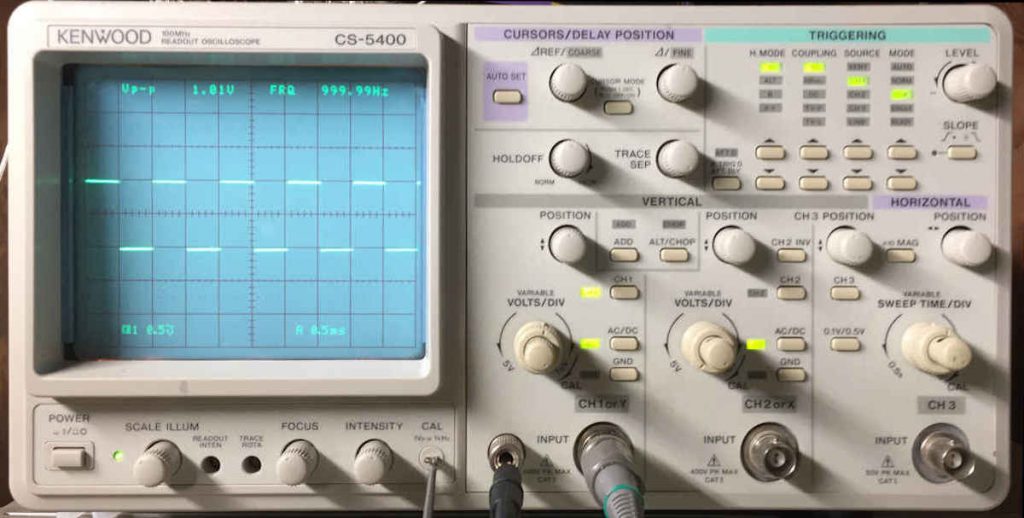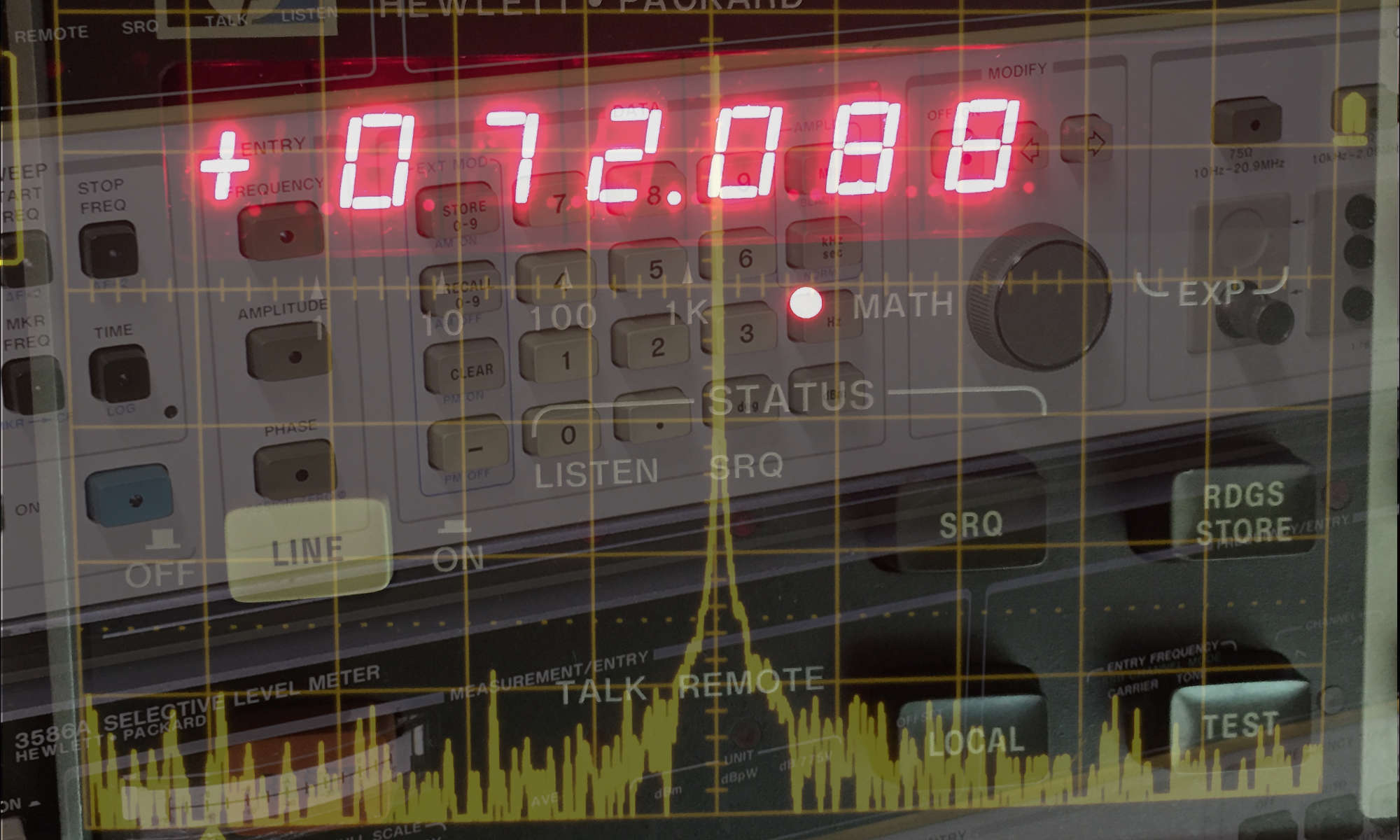An oscilloscope is the central piece of equipment in any electronics workbench. You use it to see and measure how electrical voltage varies over time.
The oscilloscope, or “scope”, produces a two-dimensional graphical display of a waveform. It displays voltage along the vertical axis and time along the horizontal axis. Scopes can display one or more waveforms on the screen, one for each input channel.
The older oscilloscopes are typically analog, non-computerized, scopes and display signals and waveforms in real-time. What you see is what you just measured.
Modern digital oscilloscopes have huge memory capacities. They display, measure, and record waveforms that can be played back and analyzed in great detail.
My New Old Scope
Scopes are expensive, but you can get a great deal if you settle for an older analog oscilloscope. I found this great little old analog scope on EBay for $50.

My new old scope is the Kenwood CS-5400, a 3-channel, 100 MHz bandwidth analog oscilloscope. This scope is from the 1980s and made in Japan. It’s called a “Readout Oscilloscope” because you can read the measurements directly on the screen. Traditionally, the user had to visually look at the waveform on the grid and make measurements visually by eye. A screen readout was quite a fancy feature to have in its time. Considering that this scope is purely analog a direct screen read out is quite impressive. It is completely non-digital without a CPU or microcontroller under the hood.
Until now, I didn’t know that Kenwood, a Japanese company, made electronic test equipment or oscilloscopes. I was only familiar with Kenwood’s other products of ham radio and stereo audio systems. The big names in oscilloscopes are typically Tektronix, Hewlett-Packard was Agilent now Keysight, Rhode-Schwarz, and more lately Rigol and Siglent. But Kenwood is unknown for test equipment in North America. But apparently, Kenwood (now Texio-Kenwood) is quite prominent in Asia, particularly in Japan.
It Works!
The Kenwood arrived from the seller nicely and safely packed and in good condition. Its only defect is that it’s missing a rubber foot on the front corner. It came alive when I turned it on. I plugged in a set of cheap oscilloscope probes and a power cord and I was in the oscilloscope business.
The first thing I did was to connect the probes to the calibration output. This output emits a fixed 1 KHz square wave so you can test your basic measurements and calibrate your scope probes (called Probe Compensation.) The screen readout said exactly 999.99 Hz at 1.01 volt peak-to-peak. Close enough, I was very happy.
Unfortunately, the scope did not come with an operating or service manual. In fact, I could not find any manuals for this scope on the internet either. So, if this scope breaks I would have to fix it blind.
Let the waveform measurements begin.
